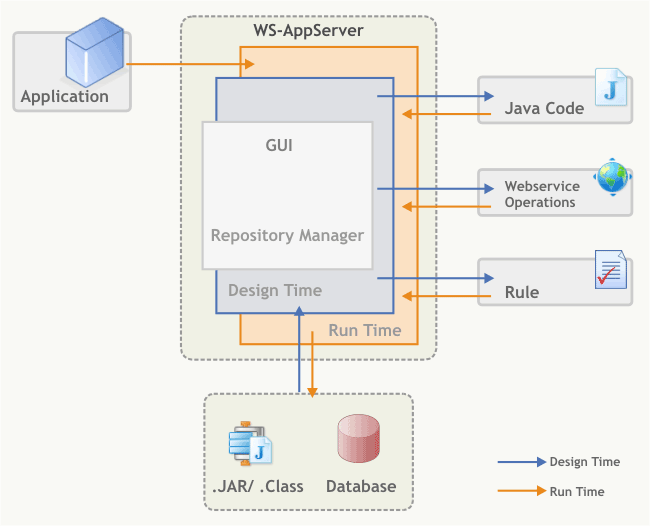Modeling Relational Data |
| This topic provides an overview of modeling relational data in Process Platform. |
|
Modeling relational data in Process Platform begins with extracting database metadata and storing it in the form of data models. In this context, WS-AppServer, which functions as an independent processing layer between a relational data source and a UI client, reads the database details, extracts metadata, and creates data models. Using the packaging feature (known as WS-AppServer Package ), WS-AppServer classifies and organizes the application content into well-defined components.
WS-AppServer plays a vital role in auto-generating the core business logic that is required by the application, extending the business logic, and exposing it as a Web service. Depending upon the data source and the tables that you have used to model your application, WS-AppServer determines the relations among classes and creates those relationship links. Thus, each model (a data object) is available with all its relational mapping that helps in the generation of Java logic to be used in applications. Using the data in these object models, WS-AppServer generates the business logic in Java, and maps the created Java class names to the database names, using the object-relational mapping technique. In absence of a database, WS-AppServer facilitates generation of classes on the basis of the custom queries. These are called custom classes, which enable the developer to write the logic so that it suits the application's objectives.
WS-AppServer also generates the Web service interface, Web service operations, and the XML schema for each model. You can also define and execute rules on these models. All these are later used to expose the business logic as Web services and load them into LDAP. Thereafter, these Web services are used by the application during run-time.

WS-AppServer also facilitates validation by employing database constraints (field checks, checks on relations between tables, and so on), and other procedures for data processing and/or retrieval. It also has the capability to interact with other web services and reuse them in combination with the internally developed Web services.
